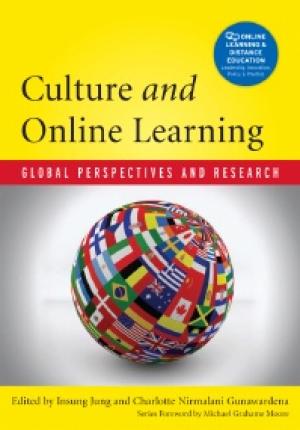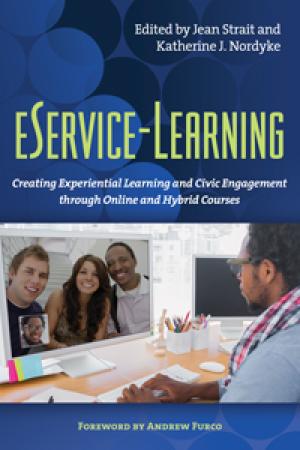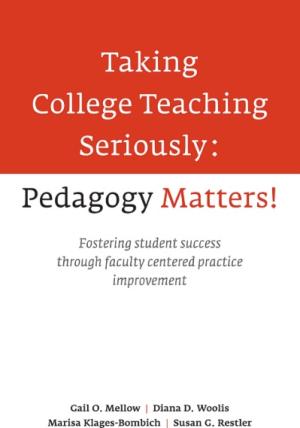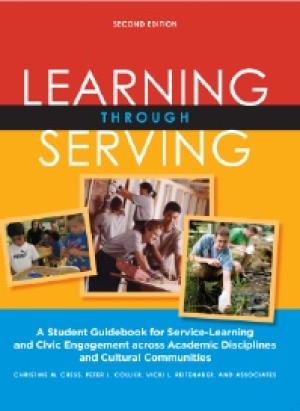Resources
White Paper and the Working Group Papers for a 2008 Teagle funded conference with participants from Bucknell University, Macalester College, Vassar College, and Williams College.
 Asking: how secular assumptions both enable and limit the questions of meaning and purpose that are central to liberal arts education. 

Click Here for Book Review Abstract: Culture plays an overarching role that impacts investment, planning, design, development, delivery, and the learning outcomes of online education. This groundbreaking book remedies a dearth of empirical research on how digital cultures and teaching and learning cultures intersect, and offers grounded theory and practical guidance on how to integrate cultural needs and sensibilities with the innovative opportunities offered by online learning. This book provides a unique analysis of culture in online education from a global perspective, and offers: * An overview of the influences that culture has on teaching, online learning, and technology * Culture-sensitive instructional design strategies and teaching guidelines for online instructors and trainers * Facilitation and support strategies for online learners from different cultures * An overview on issues of design, development, communication, and support from a cross-cultural perspective * An overview of how online education is perceived, planned, implemented, and evaluated differently in various cultural contexts Written by international experts in the field of online learning, this text constitutes with a comprehensive comparative introduction to the role of culture in online education. It offers essential guidance for practitioners, researchers, instructors, and anyone working with online students from around the world. This text is also appropriate for graduate-level Educational Technology and Comparative and International Learning programs. (From the Publisher)

Click Here for Book Review Abstract: This book serves as an introduction to using online teaching technologies and hybrid forms of teaching for experiential learning and civic engagement. Service-learning has kept pace neither with the rapid growth in e-learning in all its forms nor with the reality that an increasing number of students are learning online without exposure to the benefits of this powerful pedagogy. Eservice-learning (electronic service-learning) combines service-learning and on-line learning and enables the delivery of the instruction and/or the service to occur partially or fully online. Eservice-learning allows students anywhere, regardless of geography, physical constraints, work schedule, or other access limitations, to experience service-learning. It reciprocally also equips online learning with a powerful tool for engaging students. In eservice-learning, the core components of service, learning, and reflection may take a different form due to the online medium—for example, reflection often occurs through discussion board interactions, journals, wikis, or blogs in an eservice-learning course. Moreover, the service, though still community-based, creates a world of opportunities to connect students with communities across the globe—as well as at their very own doorstep. This book introduces the reader to the four emerging types of eservice-learning, from Extreme EService-Learning (XE-SL) classes where 100% of the instruction and 100% of the service occur online, to three distinct forms of hybrid where either the service or the instruction are delivered wholly on-line – with students, for instance, providing online products for far-away community partners – or in which both are delivered on-site and online. It considers the instructional potential of common mobile technologies – phones, tablets and mobile reading devices. The authors also address potential limitations, such as technology challenges, difficulties sustaining three-way communication among the instructor, community partner, and students, and added workload. The book includes research studies on effectiveness as well as examples of practice such drafting grants for a community partner, an informational technology class building online communities for an autism group, and an online education class providing virtual mentoring to at-risk students in New Orleans from across the country. (From the Publisher)

Click Here for Book Review Abstract: “College teaching is not rocket science – it’s much, much harder.” Diana Laurillard, University of London College faculty, both adjunct and full-time, stand with their students at the coalface of learning, wishing for more to succeed and disappointed at how illusory academic success is for so many. Among the array of investments colleges are making to improve student outcomes, from predictive data analysis to enhanced advising, too little attention is paid to supporting faculty. Yet the impact of teacher and teaching on student learning is incontrovertible. Taking College Teaching Seriously: Pedagogy Matters! stands against the tide – celebrating the incredible work faculty members do each day and challenging them to expand their capacity to present their content expertise effectively. This book presents a model of embedded professional development, which capitalizes on the affordances of technology to enable groups of faculty to examine their practice in a non-evaluative context, but with a clear focus on improvement. The core of the work involves individual reflection and the design provides for an accessible way to “see” into the classrooms of discipline peers. Most importantly, the Taking College Teaching Seriously experience is not an intense one-shot, but rather a structured opportunity for a faculty member to examine and adapt practice over time and to assess the impact of changes on student learning. Faculty who have participated in the Taking College Teaching Seriously experience found it to be transformative: • English Professor, Kentucky: Participating in (the work) this year has helped me to be more reflective in every single action. I constantly analyze how each session went… (it) gave me the tools to think about every minute detail of a classroom. • Adjunct Math Professor, Mississippi: Speaking as an adjunct, I have valued the chance to share my teaching and get ideas from others. I can honestly say that this experience has been a lifeline of sorts this year. In a “magic wand” instructional setting, I’d wish for the kind of honest, respectful and professionally challenging discussions we have in Classroom Notebook* at weekly staff meetings. *Classroom Notebook is the Taking College Teaching Seriously online platform • Math Professor, NJ: I think the continual self-evaluation and reflection allowed us to work together to brainstorm improvements and positive tweaks to be more purposeful in our classrooms as opposed to just randomly reaching in the dark for ideas and techniques in HOPE of success. Taking College Teaching Seriously: Pedagogy Matters! breaks new ground in professional development. Each faculty member is at the center of the learning experience, stimulated and supported by peers working in similar contexts. They share a desire to see more students learn deeply and find that honing their skill at adapting to the learning needs of specific classes and students allows them to realize this goal. Uniquely, Taking College Teaching Seriously illuminates the link between faculty teaching expertise and improving student outcomes. The introduction to the book examines the challenges facing faculty in higher education today and reviews the literature on teaching and learning. Chapter 1 looks at the analytical foundations for all of the model’s elements, from adult learning theory to communities of practice, and Chapter 2 presents the model’s theory of change. Chapter 3 describes the model in detail and Chapters 4 and 5 concern the infrastructure of the faculty collaborative community, focusing on both its interpersonal and technological dimensions. The book concludes in Chapter 6 with an assessment of the value of this approach to professional development and a call to action for faculty member engagement in this important work, so essential to both professional passion and mandate. (From the Publisher)

Click Here for Book Review Abstract: With the imminent demographic shifts in our society and the need to prepare students for citizenship in a global, knowledge-based society, the role of the academic department chair in creating diverse and inclusive learning environments is arguably the most pivotal position in higher education today. In the United States, increasing minority student enrollment coupled with the emergence of a minority majority American nation by 2042 demands that academic institutions be responsive to these changing demographics. The isolation of the ivory tower is no longer an option. This is the first book to address the role of the department chair in diversity and addresses an unmet need by providing a research-based, systematic approach to diversity leadership in the academic department based upon survey findings and in-person interviews. The department chair represents the nexus between the faculty and the administration and is positioned uniquely to impact diversity progress. Research indicates that more than 80 percent of academic decisions regarding appointment, curriculum, tenure and promotion, classroom pedagogy, and student outcomes are made by the department chair in consultation with the faculty. This book examines the multidimensional contributions that chairs make in advancing diversity within their departments and institutions in the representation of diverse faculty and staff; in tenure and promotion; curricular change; student learning outcomes; and departmental climate. The scope and content of the book is not limited to institutions in the United States but is applicable to academic institutions globally in their efforts to address the access and success of increasingly diverse student populations. It addresses institutional power structures and the role of the dean in relation to the appointment of chairs and their impact on the success of chairs from non-dominant groups, including female, minority, and lesbian/gay/transgendered individuals who serve in predominantly white male departments. Using qualitative and quantitative research methods, the book analyzes predominant structural and behavioral barriers that can impede diversity progress within the academic department. It then focuses upon the opportunities and challenges chairs face in their collaborative journey with faculty and administration toward inclusive departmental and institutional practices. Each chapter provides concrete strategies that chairs can use to strengthen diversity in the academic department. Addressed to department chairs, deans, faculty, and administrative leaders in higher education in all Western societies facing demographic change and global challenges, this book offers a critical road map to creating the successful academic institutions that will meet the needs of our changing populations. (From the Publisher)

Click Here for Book Review Abstract: This timely volume addresses the urgent need for new strategies and better ways to serve community colleges’ present and future students at a time of rapid diversification, not just racially and ethnically, but including such groups as the undocumented, international students, older adult learners and veterans, all of whom come with varied levels of academic and technical skills. The contributing researchers, higher education faculty, college presidents, and community college administrators provide thorough understanding of student groups who have received scant attention in the higher education literature. They address the often unconscious barriers to access our institutions have erected and describe emerging strategies, frameworks, and pilot projects that can ease students’ transition into college and through the maze of the college experience to completion. They offer advice on organizational culture, on defining institutional outcomes, on aligning shifting demographics with the multiple missions of the community college, on strengthening the collaboration of student and academic affairs to leverage their respective roles and resources, and on engaging with the opportunities afforded by technology. Divided into three parts – understanding today’s community college campuses; supporting today’s community college learners; and specialized populations and communities – this book offers a vision and solutions that should inform the work of faculty, administrators, presidents, and board members. (From the Publisher)

Click Here for Book Review Abstract: This substantially expanded new edition of this widely-used and acclaimed text maintains the objectives and tenets of the first. It is designed to help students understand and reflect on their community service experiences both as individuals and as citizens of communities in need of their compassionate expertise. It is designed to assist faculty in facilitating student development of compassionate expertise through the context of service in applying disciplinary knowledge to community issues and challenges. In sum, the book is about how to make academic sense of civic service in preparing for roles as future citizen leaders. Each chapter has been developed to be read and reviewed, in sequence, over the term of a service-learning course. Students in a semester course might read just one chapter each week, while those in a quarter-term course might need to read one to two chapters per week. The chapters are intentionally short, averaging 8 to 14 pages, so they do not interfere with other course content reading. This edition presents four new chapters on Mentoring, Leadership, Becoming a Change Agent, and Short-Term Immersive and Global Service-Learning experiences. The authors have also revised the original chapters to more fully address issues of social justice, privilege/power, diversity, intercultural communication, and technology; have added more disciplinary examples; incorporated additional academic content for understanding service-learning issues (e.g., attribution theory); and cover issues related to students with disabilities, and international students. This text is a student-friendly, self-directed guide to service-learning that: • Develops the skills needed to succeed • Clearly links service-learning to the learning goals of the course • Combines self-study and peer-study workbook formats with activities that can be incorporated in class, to give teachers maximum flexibility in structuring their service-learning courses • Promotes independent and collaborative learning • Equally suitable for courses of a few weeks’ or a few months’ duration • Shows students how to assess progress and communicate end-results • Written for students participating in service learning as a class, but also suitable for students working individually on a project. (From the Publisher)

Racial Battle Fatigue is described as the physical and psychological toll taken due to constant and unceasing discrimination, microagressions, and stereotype threat. The literature notes that individuals who work in environments with chronic exposure to discrimination and microaggressions are more likely to suffer from forms of generalized anxiety manifested by both physical and emotional syptoms. This edited volume looks at RBF from the perspectives of graduate students, middle level academics, and chief diversity officers at major institutions of learning. RBF takes up William A. Smith’s idea and extends it as a means of understanding how the “academy” or higher education operates. Through microagressions, stereotype threat, underfunding and defunding of initiatives/offices, expansive commitments to diversity related strategic plans with restrictive power and action, and departmental climates of exclusivity and inequity; diversity workers (faculty, staff, and administration of color along with white allies in like positions) find themselves in a badlands where identity difference is used to promote institutional values while at the same time creating unimaginable work spaces for these workers. (From the Publisher)

Help! My College Students Can’t Read: Teaching Vital Reading Strategies in the Content Areas is designed as a resource guide for content area instructors who have no specific training in the field of literacy but want to help the struggling readers in their classrooms. This book provides simple, step-by-step ideas for introducing and embedding reading strategies within all content areas without sacrificing a lot of valuable class time. This easy-to-use resource will equip instructors to not only help their students be stronger readers in general, but to be stronger readers of content-area academic texts. (From the Publisher)

Click Here for Book Review Abstract: Written in a tradition that encourages teachers to see classrooms as laboratories and themselves as artists, intellectuals and researchers, Teaching Writing While Standing on One Foot is a compelling work that will enthrall readers as well as give them knowledge, hope, and inspiration. Written from the perspective of a writer, teacher, father, home cook and learner growing up with a learning disability, Teaching Writing While Standing on One Foot combines essays, poems, recipes, legends, teaching tips and stories to explore the question “How do we teach what we can only learn for ourselves?” Prompts woven throughout the book invite readers to write the stories of their own lives. (From the Publisher)
Wabash Center Staff Contact
Sarah Farmer, Ph.D
Associate Director
Wabash Center
farmers@wabash.edu